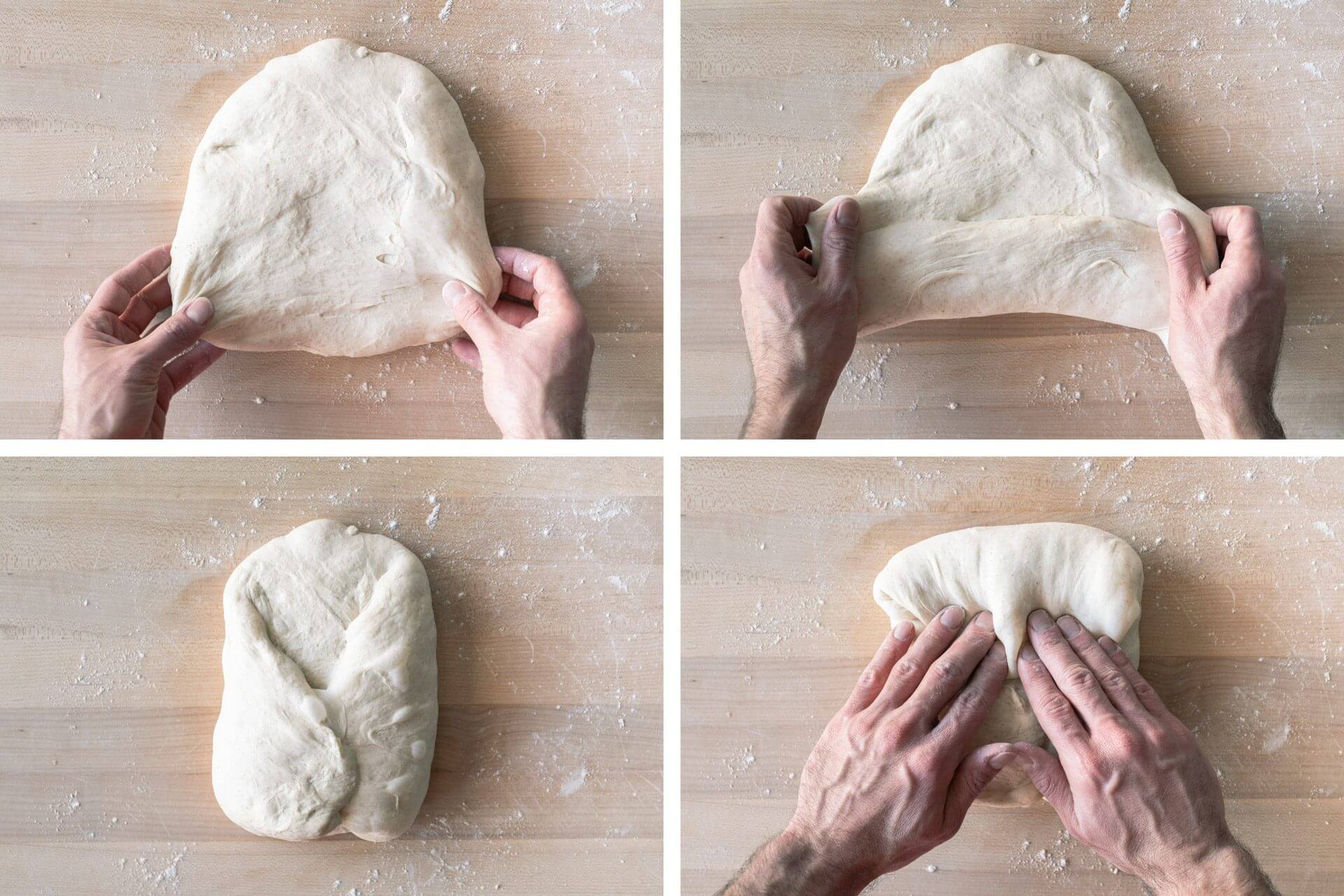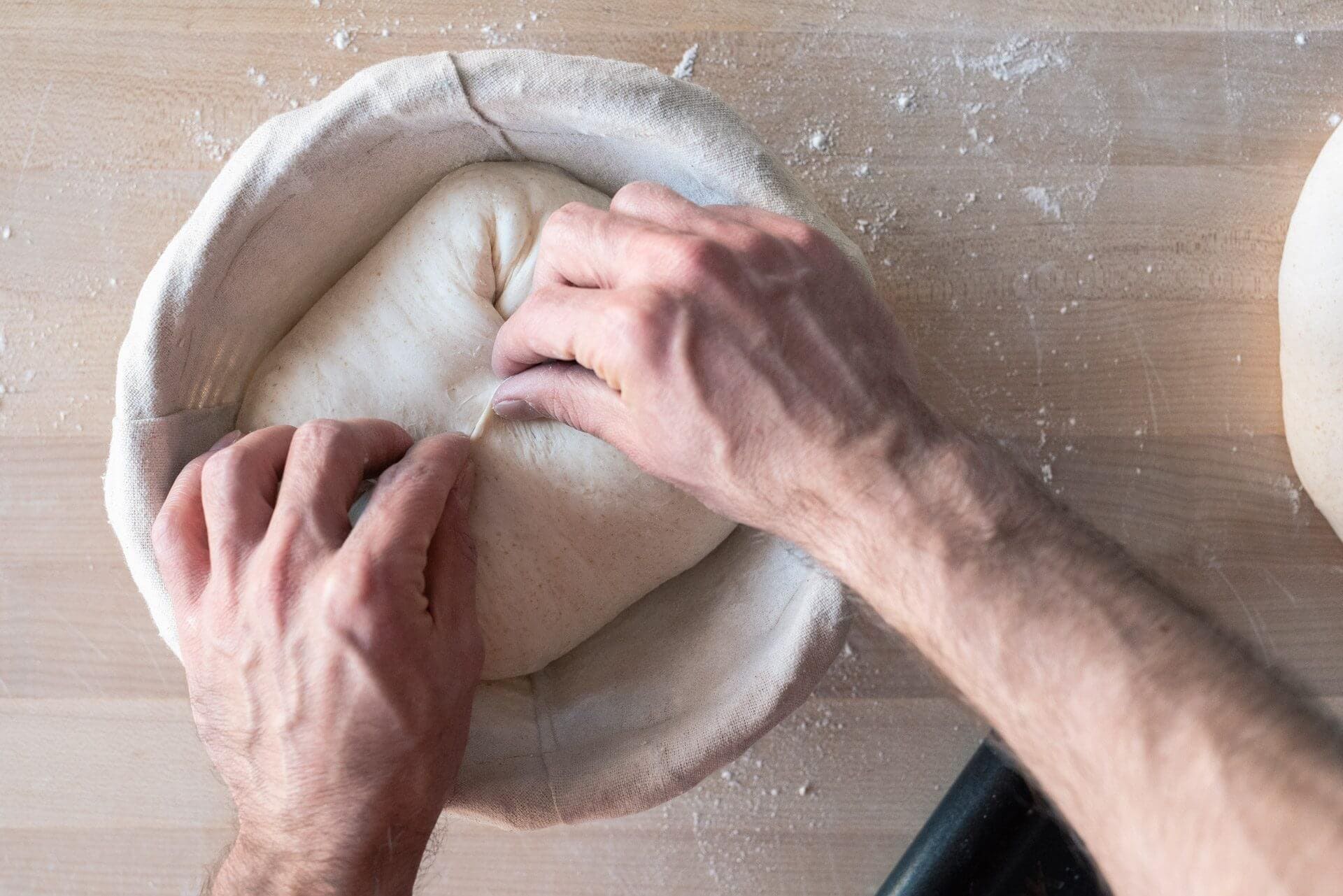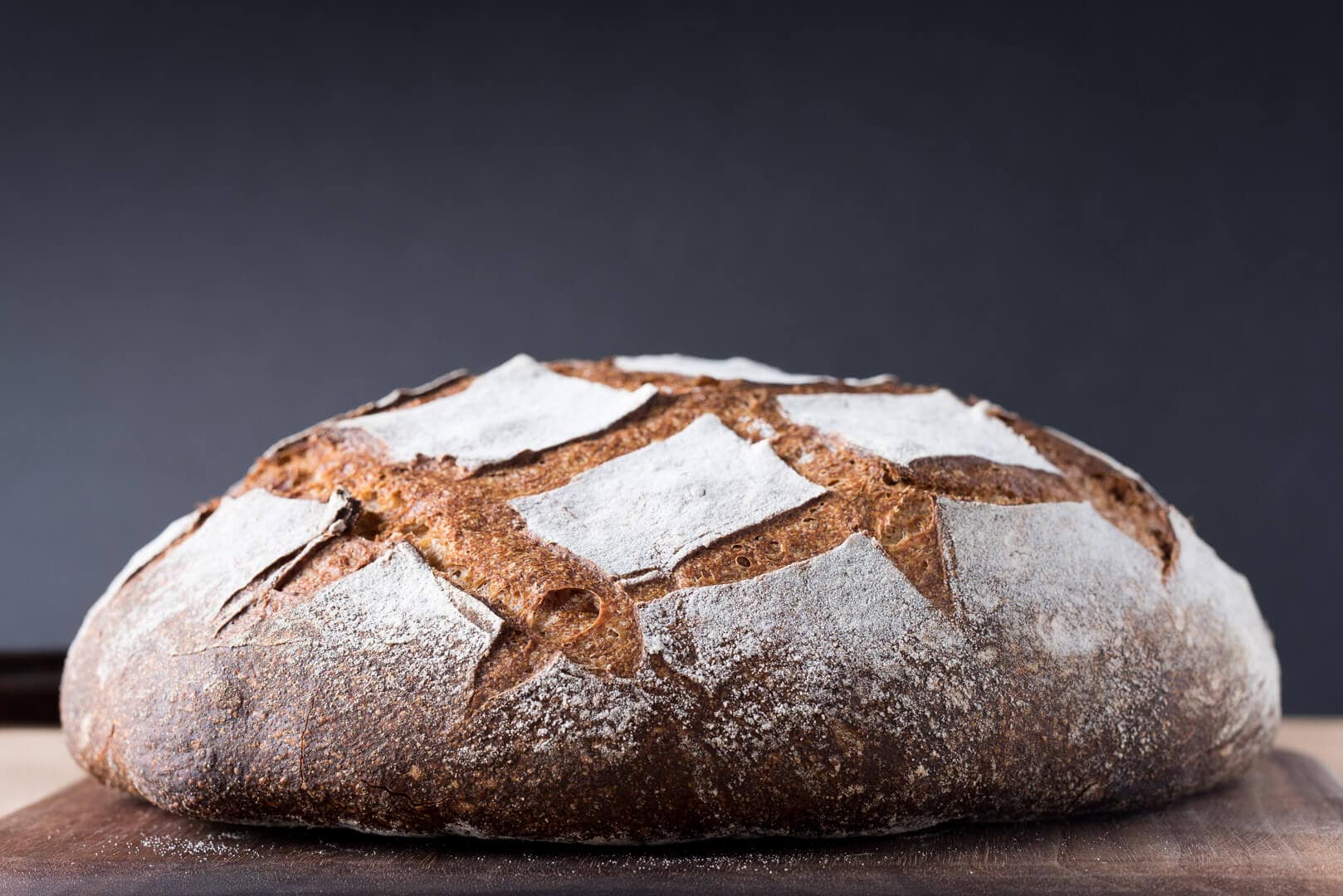A boule is bread dough shaped into a round. Shaping a boule is usually the first shaping technique a baker learns, making it a staple in any baker’s toolset and one I return to often for many types of bread.
As with most things in bread making, there are many ways to shape a boule. Some styles are more intensive and impart more structure to the dough, while others are very gentle and just barely gather it up before placing it into a proofing basket.
In this guide to shaping a boule, we’ll look at my preferred approach to shaping dough into round loaves.
What is a Boule?
Boule is a French term meaning bread in a round shape. It’s a simple shaping style. Typically, it’s the first shaping technique new bakers learn. It requires only a few motions to transform a shaggy, divided dough into a uniform round that will bake beautifully in the oven.
I tend to shape certain types of bread as boules:
- loaves with high whole grain percentages (like this 100% whole wheat sourdough)
- porridge bread (like this oat porridge)
- loaves with other mix-ins (like my malted sourdough)
- very large loaves like a miche
Due to the nature of shaping dough this way, I tend to find the interior of boules are more closed than shaping bread dough as a bâtard. But this is not bad; it’s a different approach to shaping with a different end goal.
Watch Me Shape a Boule Two Ways
The video below shows my two methods for shaping bread dough into a boule (round) shape. I take one of two approaches when shaping a boule:
- The first method is for a dough that’s more slack and weak, requiring more structural support.
- The second method is for a stronger dough that requires only a light hand when shaping.
Proofing Baskets for a Boule
Below is a list of the dough sizes I like to fit in various proofing basket sizes.
| Basket Diameter | Divided Dough Weight |
|---|---|
| 8-inches | 500 to 650 grams |
| 10-inches | 700 to 1000 grams |
| 12-inches | 1100 to 1300 grams |
I like to use round proofing baskets, either cane or wicker. If you’re baking in a closed pot like a Dutch oven, I’d recommend a dough weight of 700-900g.
Shaping a Boule: Step by Step
To begin shaping a boule, start with a rested and preshaped round. Flip the round over onto your work surface and spread it out gently.

- Pull the two sides at the bottom away from each other, making two “wings” (top-right, above)
- Fold the right side over to the middle and the left to the middle over the right (bottom-left, above)
- Using both hands, pull the top of the “envelope” up and away from your body just a bit, then fold it over and down to the middle, sealing it against the dough (bottom right, above)
- Using both hands, grab the bottom and pull up and over to the top (top-left, bottom)
- With both hands, tuck and drag the dough down towards your body to create tension on the outside of the dough. After each drag, spin the dough on the work surface and continue dragging until the dough is uniform in shape and the outside of the loaf is smooth with no tears or bulges (top-right and bottom-left, below).
- Using your bench knife, flip the dough and place it in the proofing basket with the seam side up

Add Structure by Pinching a Weak Dough
If your dough is excessively slack and weak after shaping (perhaps you needed to mix the dough longer), you can add a little structure to the dough by pinching the top. After you transfer your dough to the proofing basket, let it rest for a few minutes while you clean up.

Then, use wet or floured hands to grab the dough’s very outside edge and fold it over to the middle. To create a little package, do this at four sides, where each “flap” is opposite another one.

After the four folds, you’ll have an even tighter round. This last-minute pinching will create quite a bit of tension in the dough, adding strength to a boule that might otherwise spread significantly in the oven.
What’s Next?
To learn how to shape an oval bâtard, baguettes, pan loaves, or even buns and rolls, see my guide to shaping bread dough.
The perfect recipe to try this shaping method on is my Beginner’s Sourdough Bread recipe. That dough is relatively low hydration and just wonderful to work with; it springs up with a beautiful, craggy crust when shaped as a boule.
Happy baking!



